My (Morning) AM Skincare Routine in Just 5 Easy Steps
Taking care of our skin is an essential part of our daily routine. A consistent AM skincare routine can make a huge difference in achieving healthy, glowing skin.
An AM skincare routine involves several steps, including cleansing, toning, moisturizing, and protecting your skin with sunscreen.
By incorporating high-quality products that contain skin-loving ingredients, you can help to address specific skin concerns, such as dryness, uneven texture, or acne, and achieve a clear, radiant complexion.
In this article, I will guide you through the steps of a typical AM skincare routine, from choosing the right products to following the proper order of application.
Ready? Let’s dive in!
This post may contain affiliate links. Read disclosure here
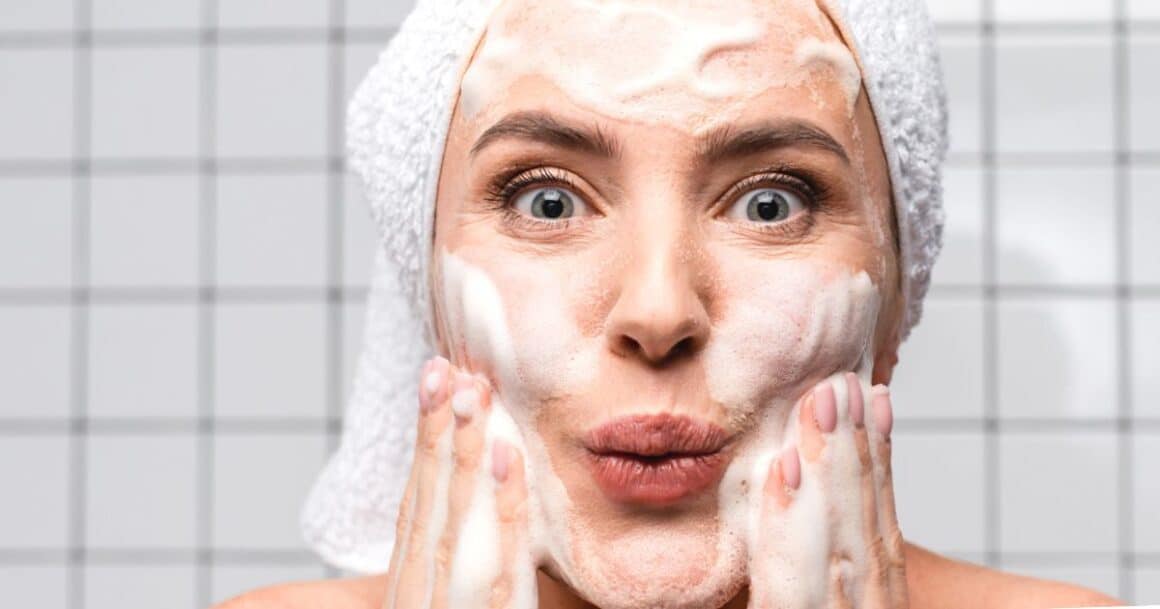
The Importance of a Solid Daily Routine
Establishing a solid AM skincare routine is crucial for healthy, glowing skin.
By incorporating a consistent AM skincare routine, we can help to protect our skin, address specific concerns, and maintain a clear, radiant complexion throughout the day.
Here are some benefits of a daily AM and PM skincare routine:
Keeps Pores Clear
Cleansing your skin twice daily helps remove dirt, excess oil, and impurities that can clog pores and lead to skin issues.
Improves skin texture
Exfoliating regularly removes dead skin cells and reveals smoother, brighter, more even-toned skin.
Related Article: Why Exfoliate? + The Best Exfoliators
Hydrates skin
Using a moisturizer morning and night helps to keep your skin hydrated and plump, reducing the appearance of fine lines and wrinkles.
Addresses specific concerns
Incorporating serums or treatments into your skincare routine can help to address specific concerns, such as dark spots, fine lines, or acne.
Protects skin
Applying sunscreen in the morning helps to protect your skin from harmful UV rays, while using a night cream with antioxidants can help to protect against environmental stressors.
Skincare Steps: The Best AM Skincare Routine
Before I dive in, I want to stress the importance of following the steps to this AM Skincare Routine in the correct order.
It’s essential to follow the steps of your skincare routine in order because each step is designed to prepare your skin for the next step and maximize the benefits of the products you’re using.
Why it’s essential to follow the steps of your skincare routine in order:
Cleansing prepares your skin
Cleansing your skin removes dirt, oil, and impurities that can clog pores and prevent other products from absorbing properly.
By cleansing your skin first, you’re preparing your skin to receive the benefits of the next products.
Active ingredients work best on clean skin.
Many skincare products contain active ingredients like retinol, vitamin C, or glycolic acid, which work best on clean skin.
Applying these products after cleansing allows them to penetrate more deeply and work on skincare concerns such as large pores, fine lines and wrinkles, and acne-prone skin.
Moisturizer locks in hydration
Applying moisturizer after serums or treatments helps lock in hydration and keep your skin plump and hydrated.
Sunscreen should be the last step.
Applying sunscreen last ensures that it’s the final layer on your skin, providing optimal protection from harmful UV rays.
Following the steps of your skincare routine can help maximize the benefits of the products you’re using and achieve healthy, glowing skin.
Skipping steps or using products out of order can reduce the effectiveness of your skincare routine and prevent you from achieving the results you’re looking for.
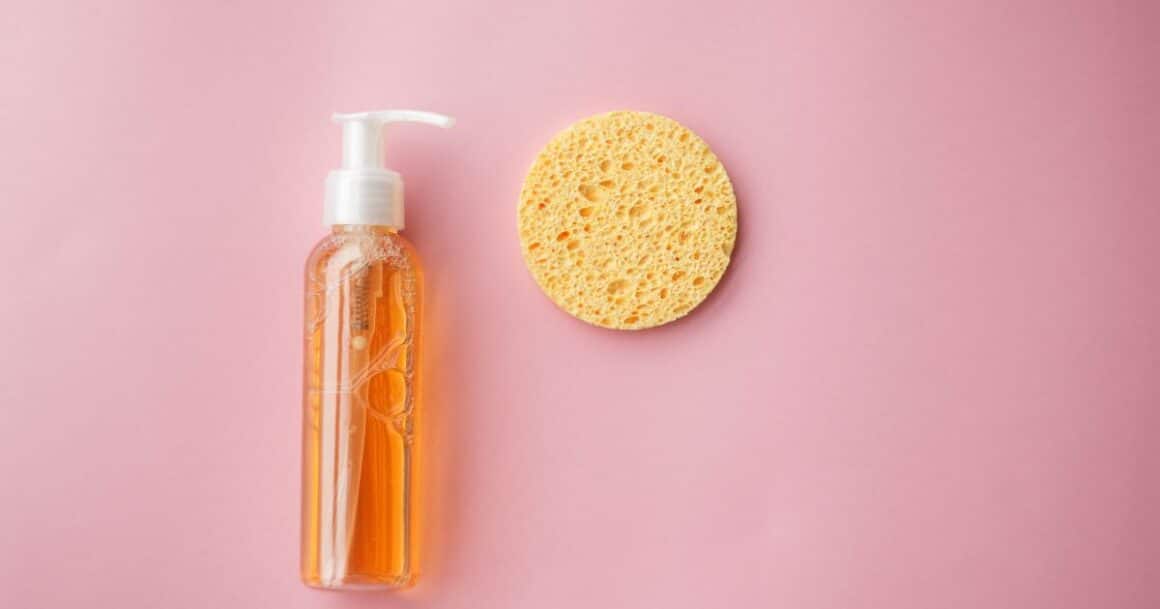
My AM Skincare Routine (step-by-step)
1. First Cleanse.
The first step in any am routine is cleansing.
Cleansing helps remove any dirt, excess oil, and leftover night cream from your skin that may have accumulated overnight.
Choosing a cleanser that works best for your skin type is essential.
If you have dry skin, a gentle, cream-based cleanser is ideal, while oily skin benefits from a foaming or gel-based cleanser.
Choosing the right face wash for your skin type can be a game-changer for your skincare routine.
Here are some different types of facial cleansers and which skin types they work best for:
Cream Cleansers
Creamy face washes are typically the most gentle. Using a gentle cleanser is ideal for dry and sensitive skin types.
These water-based cleaners are gentle and hydrating and help remove impurities without stripping your skin of natural oils.
Foaming Cleansers
Foaming cleansers are best for oily and acne-prone skin types. They contain salicylic and glycolic acids that help unclog pores and remove excess oil and dirt.
Gel Cleanser
Gel cleansers work well for combination and oily skin types. They’re lightweight, and refreshing, and help remove impurities and excess oil without drying out your skin.
Cleansing oil
An Oil-based cleanser is suitable for all skin types, including dry and combination skin. They dissolve makeup and impurities, leaving your skin feeling soft and clean.
Micellar Water
Micellar water is a gentle and effective cleanser for all skin types.
It contains micelles, which are tiny oil molecules that attract and remove dirt, oil, and makeup from your skin without stripping it of its natural oils
Exfoliating Cleansers
Exfoliating cleansers remove dead skin cells and promote cell turnover, making your skin feel smoother and brighter.
The different types of exfoliating cleansers:
- Physical Exfoliants: Physical exfoliants contain small particles like jojoba beads or sugar that physically scrub away dead skin cells.
These exfoliants or face scrubs work best for oily and acne-prone skin types. - Chemical Exfoliants: Chemical exfoliant cleansers contain alpha hydroxy acids (AHAs) or beta-hydroxy acids (BHAs) that dissolve dead skin cells and promote cell turnover.
These types of exfoliants work well for dry and sensitive skin types. - Enzyme Exfoliants: Enzyme exfoliants contain fruit enzymes like papaya, pineapple, and pumpkin that help to dissolve dead skin cells and reveal brighter, smoother skin.
I recommend using a cleansing tool such as a Clarisonic or Foreo Luna to help cleanse the skin.
Facial Cleansing Tools
Using facial cleansing tools can help to gently exfoliate the skin, removing dead skin cells and impurities that can clog pores and lead to breakouts.
This allows the cleanser to penetrate deeper into the skin, resulting in a more thorough cleanse.
Clarisonic Mia 2 Cleansing Brush
The Clarisonic Mia is a compact and portable facial cleansing brush that provides a deep cleanse for clear, radiant skin.
Its sonic vibrations gently massage the skin and remove impurities, leaving it feeling soft and smooth.
Suitable for all skin types, and is designed to be used for just one minute a day.
Its compact size makes it easy to travel with, and its rechargeable battery ensures that it’s always ready to use
Foreo Luna
The FOREO LUNA 3 is a facial cleansing device that uses sonic pulsations to provide a deep and gentle cleanse for the skin. It is made of soft, hygienic silicone that is gentle on the skin.
Designed to target specific skin concerns, such as acne or aging. In addition to cleansing, the device also has a massage function, which can help to improve blood circulation and promote a more youthful, radiant complexion.
This rechargeable facial tool should be used with a facial cleanser, helping remove impurities, makeup, and excess oil from the skin’s surface.
Natural Konjac Facial Sponges
Natural Konjac Facial Sponges are a popular cleansing tool from the Konjac root. These sponges are soft, gentle, and suitable for all skin types, including sensitive skin.
Konjac sponges provide gentle exfoliation, helping remove dead skin cells, dirt, and oil from the skin’s surface. They can be used with or without a facial cleanser and are particularly effective at removing makeup and impurities from the skin.
Konjac sponges are biodegradable and eco-friendly, are easy to clean, and can be reused for several months with proper care.
Related article: How to Double Cleanse (PM Skincare Routine)
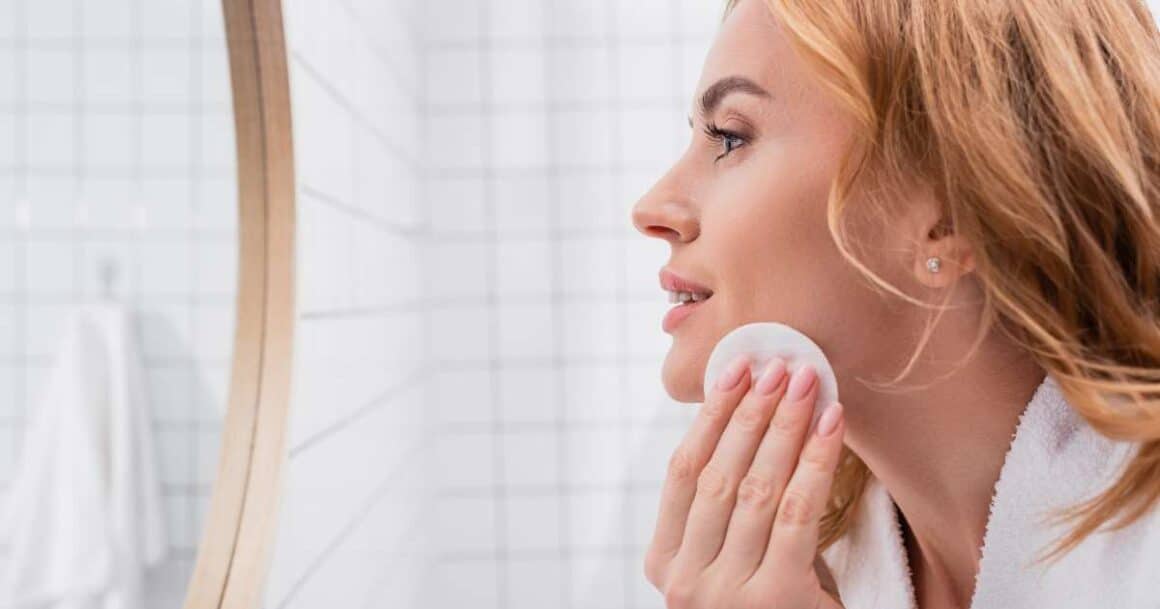
2. Facial Toner
After cleansing, the next step is to use a toner. Toning helps to restore your skin’s pH balance and prepares your skin for the rest of your routine.
It also helps remove any leftover dirt or makeup your cleanser may have missed. Some toners also have additional benefits, such as hydration or exfoliation.
Toners and clarifying lotions are essential step in your morning skincare routine as they help to restore your skin’s pH balance and prepare your skin for the rest of your routine.
Here are some different types of toners and clarifying lotions:
Hydrating Toners: Hydrating toners are perfect for dry skin types.
They contain glycerin and hyaluronic acid that help hydrate and plump up your skin.
Exfoliating Toners
Exfoliating toners contain AHAs or BHAs that help to exfoliate your skin and promote cell turnover. These types of toners work well for oily and acne-prone skin types.
Calming Toners
Calming toners contain calming ingredients like antioxidants and essential lipids that help to soothe and calm and protect irritated skin.
These types of toners work well for sensitive skin types.
Clarifying Lotions
Clarifying lotions are a type of toner that contains salicylic acid, which helps to unclog pores and prevent breakouts.
Be sure to select a clarifying lotion for your specific skin type.
Hydrating Toners
Refreshing toners contain antioxidants, ceramides, and hyaluronic acid to smooth and moisture-sensitive dry skin.
These toners are typically alcohol-free and most suitable for dry and sensitive skin types.
Witch Hazel Toners
Witch hazel is a natural astringent that helps to reduce inflammation and prevent breakouts. Witch hazel toners are great for all skin types.
Toner for Acne-Prone Skin
Toners for acne-prone skin contain potent acne-fighting ingredients that help to kill bacteria and prevent breakouts.
How to use Facial Toner
Using a facial toner is an essential step in your skincare routine that can help to remove any remaining dirt, oil, or impurities from your skin and balance your skin’s pH level.
After the skin has been thoroughly cleansed, use a small amount of toner on a cotton pad or your fingertips and apply it to your skin.
Gently pat or swipe the toner over your face and neck, avoiding the eye area.
Let it absorb before moving on to the next step.
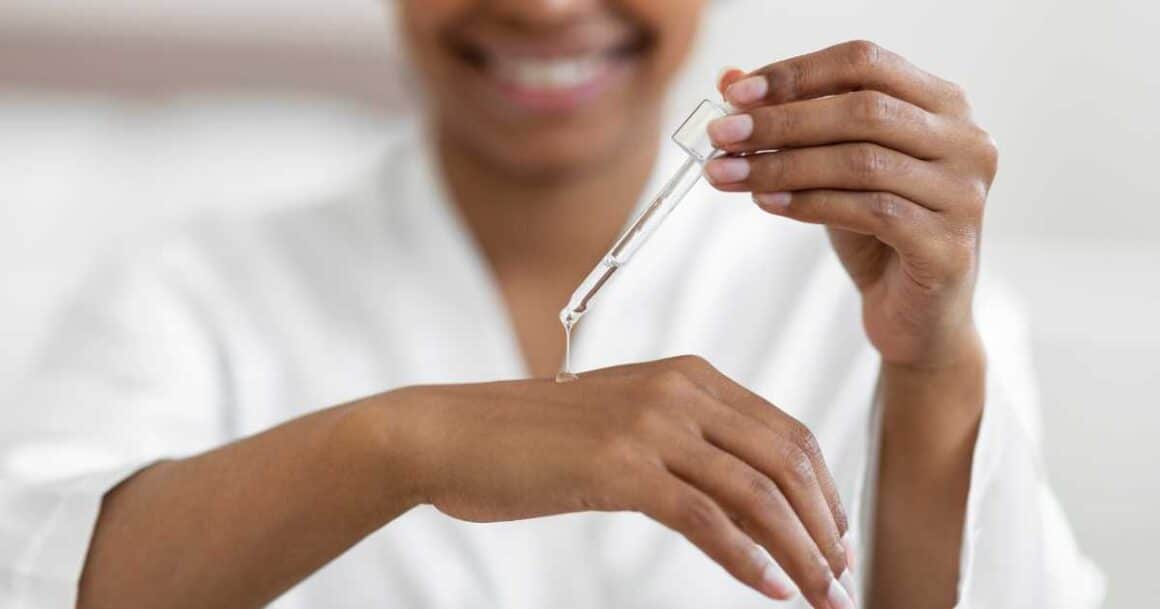
3. Apply AM Serums
Serums are packed with active ingredients that penetrate your skin and provide targeted benefits.
They can help to address a wide range of skin concerns, from fine lines and wrinkles to dark spots, hyperpigmentation, and acne.
Serums can also help to protect your skin from environmental stressors, such as free radicals and pollution, which can cause premature aging and damage to your skin cells.
Antioxidant-rich serums, such as vitamin C, green tea, and ferulic acid, help to neutralize free radicals and protect your skin from oxidative stress.
Whether you’re looking to brighten and even out your skin tone or hydrate and plump up your skin, a serum can help you achieve your skincare goals.
AM Skincare Serums
Vitamin C Serum
If you only use one serum, start with Vitamin C serum!
Vitamin C serums are great for brightening and evening out your skin tone. They also provide antioxidant protection against environmental stressors like pollution and UV rays.
Hyaluronic Acid Serum
Hyaluronic acid is a natural substance that helps to hydrate and plump up your skin. A hyaluronic acid serum can help lock in moisture and leave your skin looking dewy and glowing.
Niacinamide Serum
Niacinamide, also known as vitamin B3, is a potent antioxidant that helps to reduce inflammation and redness.
This serum helps to regulate excess oil production and can improve the appearance of enlarged pores!
Peptide Serum
Peptides are amino acids that help to promote collagen production and improve the texture and firmness of your skin.
Using a peptide serum helps reduce the appearance of fine lines and wrinkles, smoothes rough skin tone, and decreases the appearance of dark spots.
Alpha Hydroxy Acid (AHA) Serum
AHAs, such as glycolic and lactic acid, help exfoliate your skin and promote cell turnover.
These acids brighten skin and reduce the appearance of dark spots and hyperpigmentation.
Beta Hydroxy Acid (BHA) Serum
BHAs, such as salicylic acid, are great for oily and acne-prone skin as they help to unclog pores and reduce inflammation.
They also have anti-bacterial properties that help to prevent breakouts.
Caffeine Serum
Caffeine serum is a type of skincare product that contains caffeine as a key ingredient.
Caffeine is known for its stimulating properties, and when applied topically, it can help to reduce puffiness and dark circles under the eyes.
Coenzyme Q10 Serum
Coenzyme Q10 is an antioxidant that helps to protect your skin from free radicals and boost collagen production.
This powerful anti-aging trio goes above and beyond to rejuvenate and nourish the skin. Not only does it effectively smooth fine lines and wrinkles, but it also works to prevent the visible signs of aging, restore firmness and texture, repair environmentally damaged skin, and protect against future damage.
The Best Serums for AM Skincare
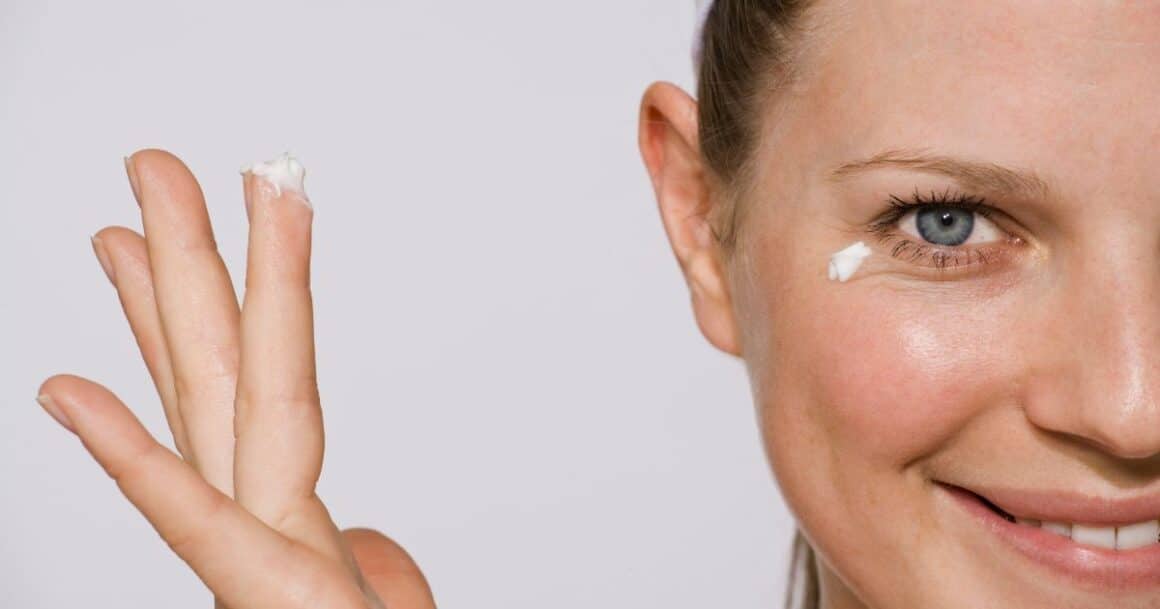
4. Eye Cream
The delicate skin around your eyes is prone to wrinkles and fine lines, so using an eye cream is essential. Look for eye creams with caffeine or peptides, which help to reduce puffiness and dark circles.
Eye creams are a great way to target specific concerns around the delicate eye area, such as dark circles, fine lines, and puffiness.
Using an eye cream is an essential step in your skincare routine, as the skin around your eyes is delicate and requires special care.
Apply eye cream to clean, toned, dry skin. Using your ring finger, Use a small amount of eye cream on your under-eye area.
Using your ring finger, gently pat the eye cream into your skin, starting from the inner corner of your eye and working your way outwards.
Apply in the morning during your evening routine.
The Best AM Skincare Eyecreams
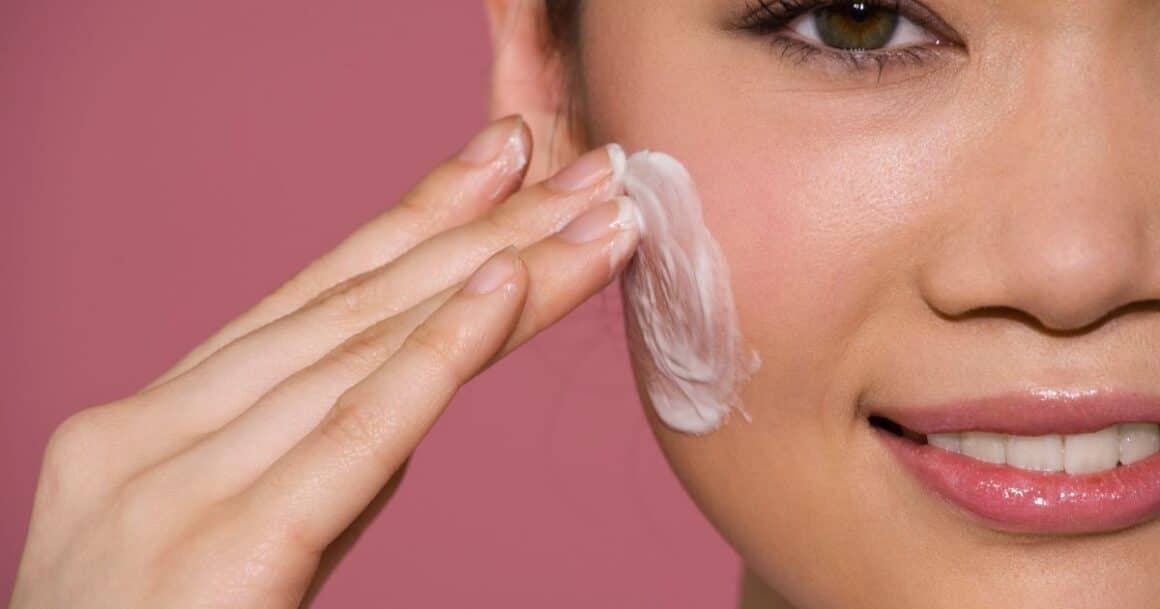
5. Apply AM Moisturizer
Moisturizing is a crucial step in any skincare routine. It helps to lock in moisture and keeps your skin hydrated throughout the day.
If you have dry skin, choose a heavier cream-based moisturizer, while oily skin benefits from a lightweight, gel-based moisturizer.
Incorporating a moisturizer into your skincare routine can help to keep your skin hydrated and plump, reducing the appearance of fine lines and wrinkles and leaving your skin looking healthy and glowing.
When choosing a moisturizer, it’s essential to look for ingredients that will nourish and hydrate your skin, leaving it looking healthy and radiant.
Here are some skin-loving elements to look for in a moisturizer:
Hyaluronic acid
This ingredient is a humectant that can hold up to 1000 times its weight in water, helping to hydrate and plump the skin.
Ceramides
Ceramides are lipids that help to strengthen the skin’s protective barrier and prevent moisture loss, keeping the skin hydrated and healthy-looking.
Glycerin
This is another humectant that can help to draw water into the skin, providing long-lasting hydration.
Niacinamide
This ingredient has anti-inflammatory properties that can help reduce redness and irritation while improving skin texture and tone.
Vitamin E
This antioxidant can help protect the skin from environmental stressors while providing hydration and nourishment.
Aloe vera
This natural ingredient has soothing properties that can help to calm and hydrate the skin, reducing the appearance of redness and irritation.
Shea butter
This natural ingredient is rich in fatty acids and antioxidants, providing deep hydration and nourishment to the skin.
The Best Moisturizers for AM Skincare Routine
6. Sunscreen (the most important step!)
The last and final step is sunscreen.
Sunscreen is a crucial step in your morning skincare routine as it helps to protect your skin from harmful UV rays.
Why applying sunscreen is so important:
Prevents sun damage
Exposure to UV rays can cause premature aging, sunspots, and wrinkles. Sunscreen helps to prevent this damage and keep your skin looking youthful.
Reduces skin cancer risk
Prolonged exposure to UV rays can increase your risk of developing skin cancer. Sunscreen helps to protect your skin and reduce this risk.
Keeps skin even-toned
Sunscreen helps to prevent dark spots and hyperpigmentation caused by UV damage, keeping your skin even-toned and smooth.
Maintains skin’s health
Sunscreen helps to maintain your skin’s health by preventing damage to skin cells and promoting healthy skin function while avoiding skin cancer.
The Best AM Skincare Face Sunscreens
Things to look for in sunscreen for the best results:
Broad-spectrum protection
Ensure the sunscreen provides broad-spectrum protection, which means it protects against UVA and UVB rays. UVA rays can cause premature aging and skin damage, while UVB rays can cause sunburn.
SPF level
Choose a sunscreen with at least SPF 30. SPF stands for Sun Protection Factor and measures how well the sunscreen protects against UVB rays. Higher SPF levels provide more protection, but no sunscreen can offer 100% protection.
Water-resistant
Choose water-resistant sunscreen if you plan to swim or sweat. Depending on the label, water-resistant sunscreens can withstand up to 40 or 80 minutes of water exposure.
Ingredients
Look for sunscreen with gentle, non-irritating ingredients. Zinc oxide and titanium dioxide are good options for sensitive skin, as they are less likely to cause irritation.
Avoid sunscreens that contain fragrances or alcohol, as they can irritate your skin.
Skin type
Choose a sunscreen that’s appropriate for your skin type. If you have oily skin, look for a lightweight, oil-free formula. If you have dry skin, look for a moisturizing sunscreen that contains ingredients like hyaluronic acid or glycerin.
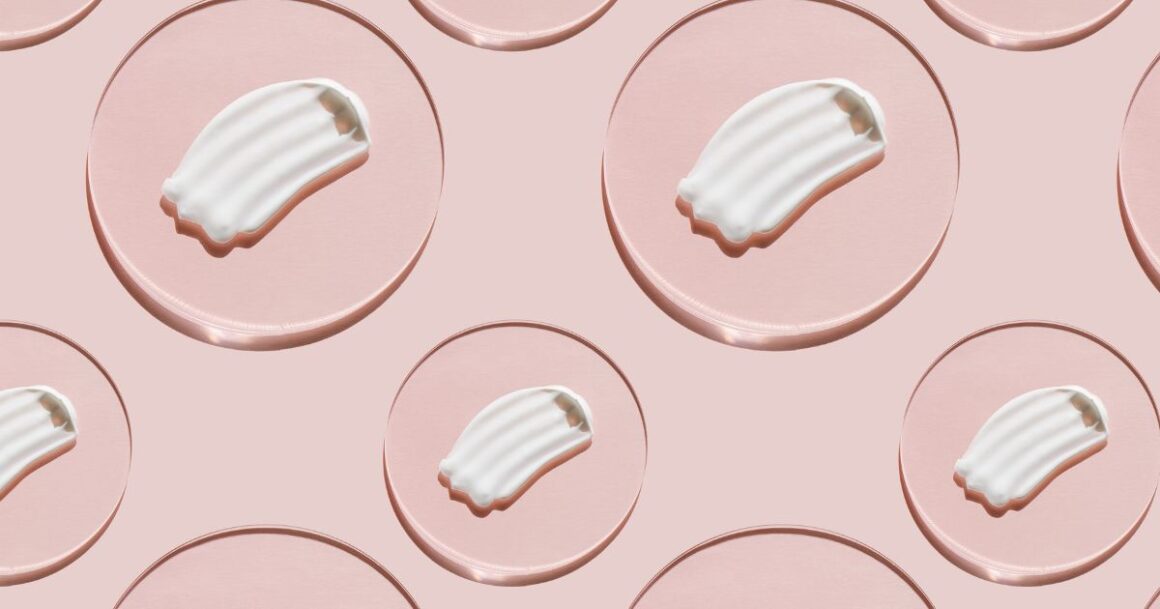
Physical (mineral sunscreen) Vs Chemical Sunscreen
Physical and chemical sunscreens are two types of sunscreen that work in different ways to protect your skin from the sun’s harmful rays. (source)
Physical Sunscreen
Physical sunscreens, or mineral sunscreens, use mineral ingredients like zinc oxide or titanium dioxide to create a physical barrier that reflects UV rays away from the skin.
Because they sit on the skin’s surface, physical sunscreens work immediately after application and are less likely to cause irritation or allergic reactions.
However, they can be thick and difficult to apply evenly and may leave a white or chalky residue on the skin.
Chemical Sunscreen
Chemical sunscreens, on the other hand, work by absorbing UV rays before they can penetrate the skin.
They contain organic compounds like avobenzone, octinoxate, or oxybenzone, which convert UV rays into heat and release them from the skin.
Chemical sunscreens are usually easier to apply and don’t leave a visible residue on the skin. However, some people may be sensitive to certain chemical sunscreen ingredients and experience irritation or allergic reactions.
One potential disadvantage of chemical sunscreens is that they need time to absorb into the skin before they start working, usually about 20 minutes after application.
They’re also more likely to break down in sunlight, meaning they must be reapplied more frequently.
Related article (Evening) PM Skincare Routine (coming soon!)
Related Articles
- Best Anti-aging Treatments for over 40+
- Best Self-care Ideas for Women
- Best Facial Wash for Hyperpigmentation
- Best Facial Wash for Black Skin
- 100 Essentials for Women
- Nighttime Skincare for Mature Skin
- How to Age Gracefully
- Best The Ordinary Products for Aging
- Best Lotion for Crepey Skin
- Nightstand Essentials for Women
Conclusion: AM Skincare Routine for Flawless Skin
In conclusion, an AM skincare routine is vital in achieving healthy, glowing skin.
Each step is crucial in preparing your skin for the day ahead, from cleansing and toning to moisturizing and applying sunscreen.
By incorporating high-quality products that contain skin-loving ingredients, such as hyaluronic acid, ceramides, and Vitamin E, you can help to nourish and hydrate your skin, leaving it looking and feeling its best.
Remember to choose products that work best for your skin type and concerns and to follow the steps for optimal results.
And don’t forget the importance of sunscreen in protecting your skin from harmful UV rays.
If you have any questions or comments, please leave them below.
XO, Christine

I’ve been keeping it real since 1963. 🙂
I’m a child of God, a wifey, mama, grandma, full-time creative, domestic engineer, and self-care enthusiast.
I am obsessed with all things makeup and skincare and love getting my hands dirty out in the garden, my art room, or in the kitchen, whipping up something yummy for the fam.
I’m always down to chat and love collaborating with other creatives and brands alike!
Feel free to reach out anytime!







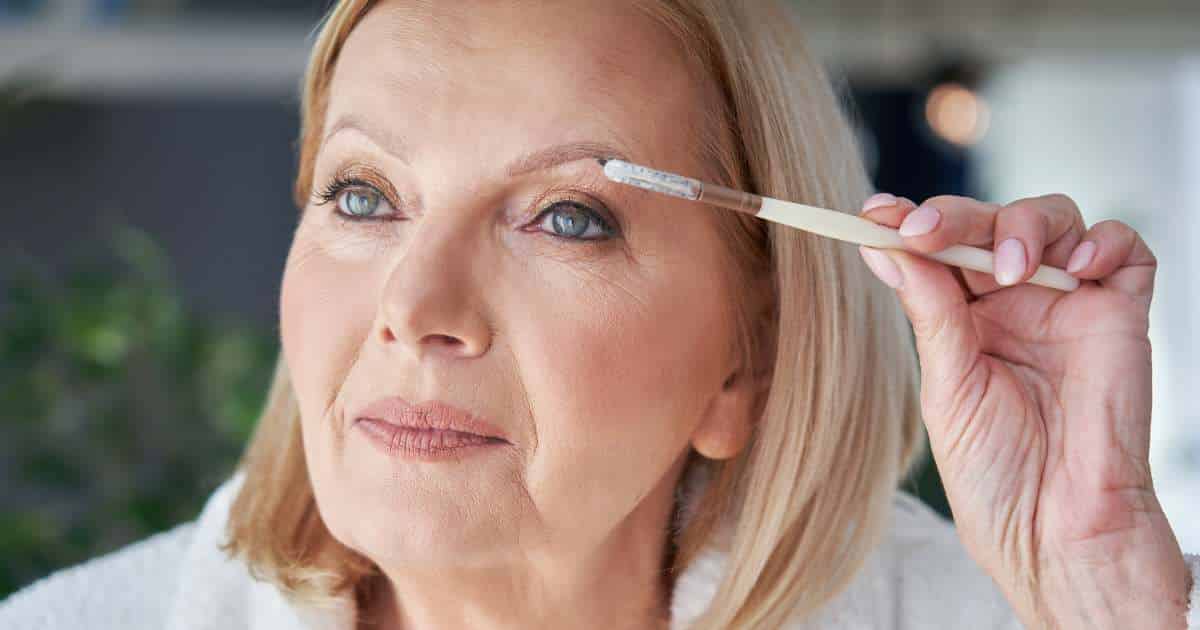
Love how you included sunscreen. I see so many people miss or avoid this step altogether- and you’re right it’s the most important step! Great post!!
Amazing post!Thanks for sharing❤️